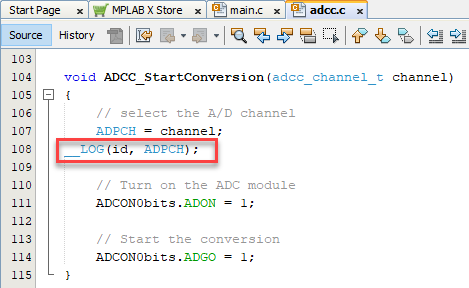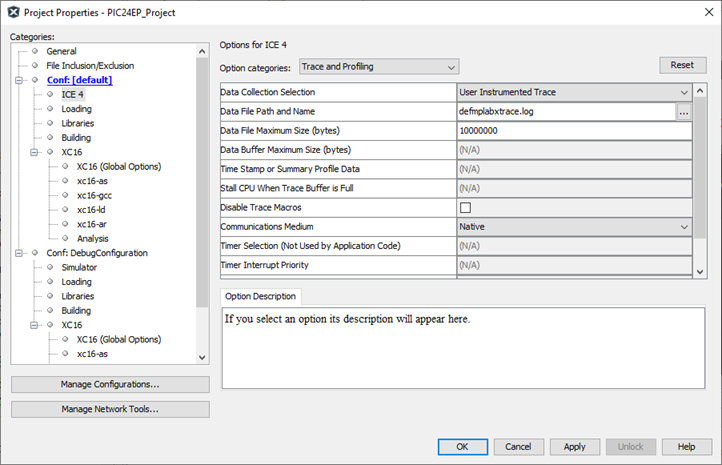5.5.2 How Trace Works
Trace for the MPLAB ICE 4 in-circuit emulator (Instrumented Trace) is a
solution for providing basic trace information. Through the use of
TRACE() and LOG() macros, you can report program
locations or variable values to MPLAB X IDE while the application is running and examine
them via the Trace window once the application halts. You may type these macro names in
manually or right click in the editor and select the macro to be inserted from the
context menu. To log a variable value, the variable should be highlighted before
selecting from the context menu.

Trace methods and related options are located on the Project Properties dialog, “ICE4” Category, “Trace and Profiling” Options Category page. The choices found under “Communications Medium” are “Native Trace” (utilizes PGC/PGD communication lines), “SPI Trace” or “I/O Port Trace.” Not every method is available on every part; i.e., the options are device specific. The Instrumented Trace library supports C and assembly projects on PIC18F MCU devices, but only C projects on 16-bit devices.

The trace and log information transmitted is identical regardless of the
trace method used. For TRACE(), a single value in the range of 64-127
is sent. A label generated using this number is automatically inserted into the code, so
MPLAB X IDE can identify in the trace buffer the location that sent the value. For
LOG(), a two-byte header is sent, followed by the value of the
variable being logged. The first byte indicates the variable type, and is a value
between 0 and 63. The second byte indicates the location that sent the variable. Here,
the location is represented by a value between 0 and 127.
Interrupts are disabled during every TRACE() or
LOG() call. This is to ensure that trace or log statements at an
interrupt level do not interfere with a trace or log statement that may already be in
progress at the application level. A similar argument holds for protecting statements
within a low priority interrupt from being corrupted by those from a high priority
interrupt.
